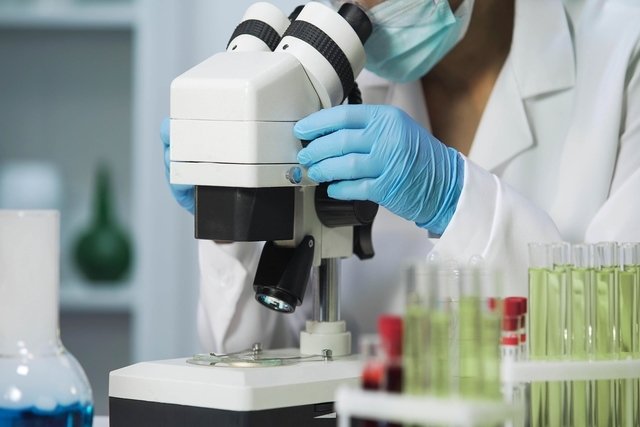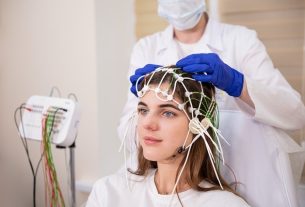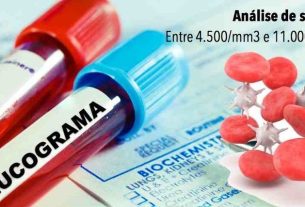Bacterioscopy is a diagnostic technique that allows you to quickly and simply identify bacteria, as it is done through specific stains that allow you to visualize bacterial structures under a microscope.
Bacterioscopy can be performed to diagnose various infections caused by bacteria, such as sexually transmitted infections, tonsillitis, urinary tract infections and tuberculosis, for example.
This examination can be carried out with any biological material, and the doctor must indicate which material is to be collected and analyzed, and the result indicates whether or not the presence of bacteria was verified, as well as their quantity and visualized characteristics.

What is it for
Bacterioscopy is used to investigate diseases caused by bacteria, and is mainly carried out in cases of:
- Sexually transmitted infections, such as gonorrhea and chlamydia, for example, with penile or vaginal secretions being used for this purpose. The collection is done using a sterile swab and it is contraindicated to clean the genital region 2 hours before the exam and not to have sexual intercourse in the 24 hours before the collection;
- Tonsillitisbecause by collecting throat secretion it is possible to identify gram-positive bacteria responsible for inflammation in the tonsil, with bacteria of the streptococcus type being normally identified;
- Infections in the urinary systemwhich is done through analysis of first-stream urine;
- Tuberculosisin which sputum is analyzed;
- Infections in surgery wounds, as it is common for infections to occur after operations due to a decrease in the person’s immune system. Therefore, collecting wound secretions with a sterile swab may be recommended to check the possible presence of bacteria in the area;
- Skin or nail injuries, which consists of collecting a superficial sample, and it is recommended not to use creams and nail polishes at least 5 days before the exam. Although bacterioscopy can be performed, fungi are normally observed when analyzing a nail sample, for example.
Furthermore, bacterioscopy can be used to assist in the diagnosis of bacterial meningitis, respiratory tract and gastrointestinal diseases, and can be done through biopsy or material from the anal region.
How it is made
The bacterioscopy exam is carried out in the laboratory and the material collected from the patient is analyzed under a microscope to investigate the absence or presence of bacteria, in addition to their characteristics.
Preparation for taking the exam depends on the material that will be collected and analyzed. In the case of vaginal material, it is not recommended that the woman perform hygiene 2 hours before the exam and not have sexual intercourse in the last 24 hours, while in the case of collecting material from the nail or skin, for example, it is recommended not to pass nail polish, creams or substances on the skin before the exam.
In the case of a vaginal secretion sample, for example, the swab that was used to collect it is passed in circular movements on a slide, which must be identified with the patient’s initials, and then must be stained with the Gram. In the case of a sputum sample, for example, which is the material collected mainly to check the presence of the bacteria responsible for tuberculosis, the stain used in bacterioscopy is Ziehl-Neelsen, which is more specific for this type of microorganism.
Normally, when the presence of bacteria is verified, the laboratory performs the identification of the microorganism and the antibiogram, giving a more complete result.
How Gram staining is done
Gram staining is a simple and quick staining technique that allows the differentiation of bacteria according to their characteristics, allowing bacteria to be differentiated into positive or negative according to their color, allowing them to be viewed under a microscope.
This staining method uses two main dyes, one blue and one pink, which may or may not stain the bacteria. Bacteria stained blue are called gram-positive, while those stained pink are called gram-negative. Based on this classification, it is possible for the doctor to begin preventive treatment, even before identifying the microorganism. Understand how gram staining is done and what it is for.
What does the result mean
The result of bacterioscopy aims to indicate the presence or absence of microorganisms, characteristics and quantity, in addition to the material that was analyzed. The result is said to be negative when no microorganisms are observed and positive when microorganisms are seen. The result is usually indicated by crosses (+):
- 1 +indicates that 1 to 10 bacteria were seen in 100 fields, which may be indicative of an initial infection;
- 6 +represents the presence of more than 1000 bacteria per field observed, representing a more chronic infection or bacterial resistance, for example, indicating that the treatment is not being effective.
Furthermore, the report informs the coloring that was used, which could be Gram or Ziehl-neelsen, for example, in addition to the characteristics of the microorganism, such as shape and arrangement, whether in bunches or chains, for example. Normally, when the result is positive, the laboratory identifies the microorganism and antibiogram, indicating which antibiotic is most recommended to treat the infection with a particular bacteria.




